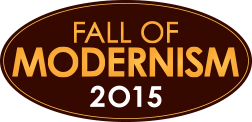Karan Rhulen Gallery – Postwar New Mexico Modernists
Santa Fe, NM | July 29, 2015
FOR IMMEDIATE RELEASE
CONTACT: Tim Squires
505.820.0807
info@karanruhlen.com
NEW MEXICO MODERNIST AFTER WORLD WAR II
Janet Lippincott, Beatrice Mandelman, and Louis Ribak
Exhibition of 25 paintings and original lithographs
September 1 – 30, 2015
Karan Ruhlen Gallery, 225 Canyon Road, Santa Fe, NM 87501
Visuals & Curriculum Vitae online at www.karankaranruhlen.com
Like the post-World War I generation of modernists, this second generation was reared and educated in the fertile art communities of the East and West Coasts and Europe. Louis Ribak and Janet Lippincott served in World War II, taking up residence in New Mexico thereafter and in some cases using their GI Bill benefits to study with the first generation of New Mexico modernists. Others were drawn to the state by the first generation, including Florence Pierce who studied with Emil Bisttram, Earl Stroh who studied with Andrew Dasburg and Tom Benrimo; and Lumpkins with Bisttram and Raymond Jonson. Beatrice Mandelman and Louis Ribak were encouraged to move to New Mexico by John Sloan.
What each of the modernists has in common is a commitment to authentic self-expression using color, line, space and form. Many abstracted New Mexico’s evocative earth elements, including Lippincott and Ribak. Lippincott, Ribak and Mandelman worked intuitively and were prolific. Several of this generation created original prints produced at Tamarind Lithography Workshop, where Clinton Adams served as director.
The artists might also have subscribed to Beatrice Mandelman’s observation that working non-objectively has an inherent bliss that allows the artist to communicate with the viewer through imagination, interpretation and emotional response that is not based on the literal or the descriptive. As Mandelman noted in a 1998 Forbes magazine article, her paintings translate the “joy, love, song [and] dance” of life. It’s like music,” she continued. “It either touches you or it doesn’t.”
Ruhlen notes that New Mexico’s post-World War II painters follow the general pattern of taking about a hundred years to be evaluated and placed in the context of art history. “That is one reason why the price point for most of this work is still accessible,” she asserts. “The area is ripe for building a museum quality collection, even an encyclopedic one. Collectors are also specializing, building collections, for example, of Lippincott’s early, middle and late periods. Others have turned to original prints by this exciting generation of artists. It’s a vital art niche that is historically significant and surprisingly still affordable.”

